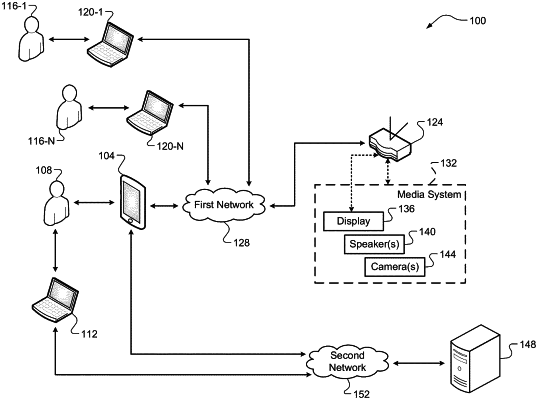| CPC H04L 65/1069 (2013.01) [H04W 4/80 (2018.02); H04W 12/06 (2013.01)] | 20 Claims |

|
1. A computer-implemented method comprising:
initializing, by a first computing device, a real-time meeting communication session between a user and one or more other users, wherein a participation of the user in the real-time meeting communication session is to begin via a mobile computing device of the user;
receiving information indicative of the mobile computing device of the user being present at a physical location of the first computing device, wherein the user is associated with the mobile computing device and a second computing device;
granting control of the real-time meeting communication session to the first computing device from the mobile computing device of the user at the physical location of the first computing device;
causing the second computing device of the user at the physical location of the first computing device to display a user interface element, which when selected allows the participation of the user in the real-time meeting communication session to continue via the second computing device of the user at the physical location of the first computing device, wherein the user interface element is caused to be displayed on the second computing device after granting the control to the first computing device from the mobile computing device of the user at the physical location of the first computing device; and
allowing the user to participate in the real-time meeting communication session to the second computing device of the user at the physical location of the first computing device in response to a selection of the user interface element.
|